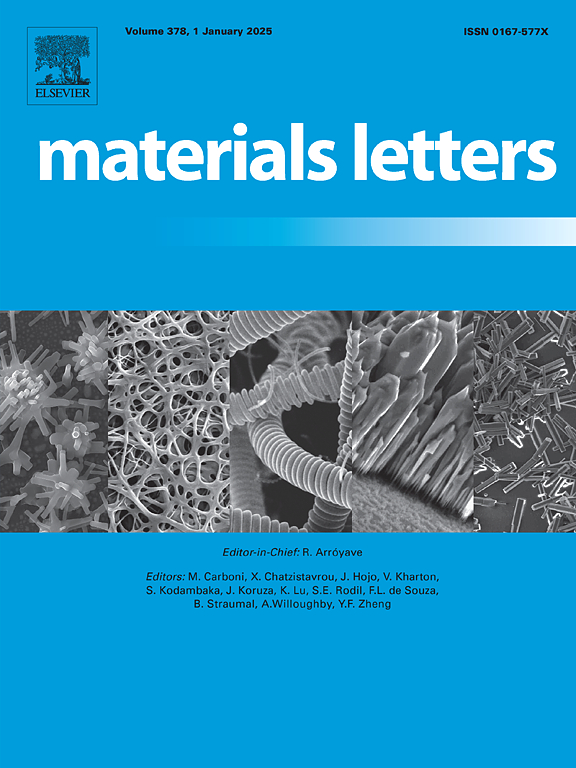Ni60-WC-Co double-layer coating fabricated on TC4 alloy substrate using the rapid hot pressing sintering
IF 2.7
4区 材料科学
Q3 MATERIALS SCIENCE, MULTIDISCIPLINARY
引用次数: 0
Abstract
Ni60-WC-Co double-layer coating was successfully prepared on TC4 alloy substrate using the rapid hot-press sintering method. The WC-Co coating primarily consists of WC and Co phases, with a small amount of W2C phase. The Ni60 interlayer is mainly composed of four phases: FeNi3, Cr7C3, CrB and Cr2B. A diffusion layer of approximately 500 μm was formed between the Ni60 interlayer and the TC4 substrate. The Ni60 interlayer significantly improved the interfacial bonding between the WC-Co coating and the TC4 substrate. Dense interfaces were formed between the TC4 substrate, the diffusion layer, the Ni60 interlayer, and the WC-Co coating, with no micro-porosity or cracks observed. Compared to the TC4 substrate, the microhardness and wear resistance of the coating were increased by 3.42 times and 12.12 times, respectively.
求助全文
约1分钟内获得全文
求助全文
来源期刊

Materials Letters
工程技术-材料科学:综合
CiteScore
5.60
自引率
3.30%
发文量
1948
审稿时长
50 days
期刊介绍:
Materials Letters has an open access mirror journal Materials Letters: X, sharing the same aims and scope, editorial team, submission system and rigorous peer review.
Materials Letters is dedicated to publishing novel, cutting edge reports of broad interest to the materials community. The journal provides a forum for materials scientists and engineers, physicists, and chemists to rapidly communicate on the most important topics in the field of materials.
Contributions include, but are not limited to, a variety of topics such as:
• Materials - Metals and alloys, amorphous solids, ceramics, composites, polymers, semiconductors
• Applications - Structural, opto-electronic, magnetic, medical, MEMS, sensors, smart
• Characterization - Analytical, microscopy, scanning probes, nanoscopic, optical, electrical, magnetic, acoustic, spectroscopic, diffraction
• Novel Materials - Micro and nanostructures (nanowires, nanotubes, nanoparticles), nanocomposites, thin films, superlattices, quantum dots.
• Processing - Crystal growth, thin film processing, sol-gel processing, mechanical processing, assembly, nanocrystalline processing.
• Properties - Mechanical, magnetic, optical, electrical, ferroelectric, thermal, interfacial, transport, thermodynamic
• Synthesis - Quenching, solid state, solidification, solution synthesis, vapor deposition, high pressure, explosive
 求助内容:
求助内容: 应助结果提醒方式:
应助结果提醒方式:


